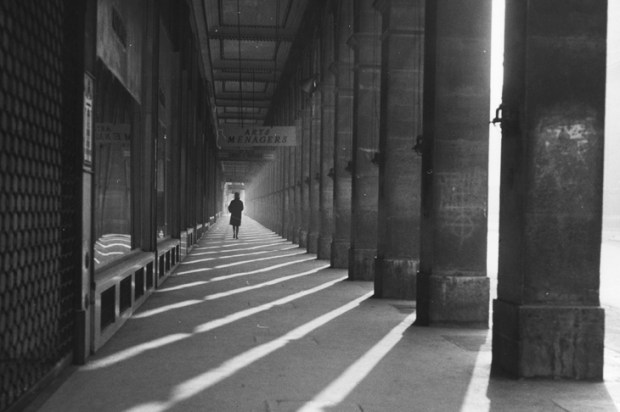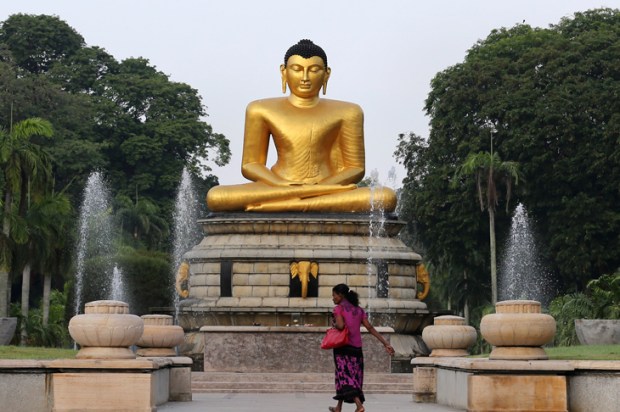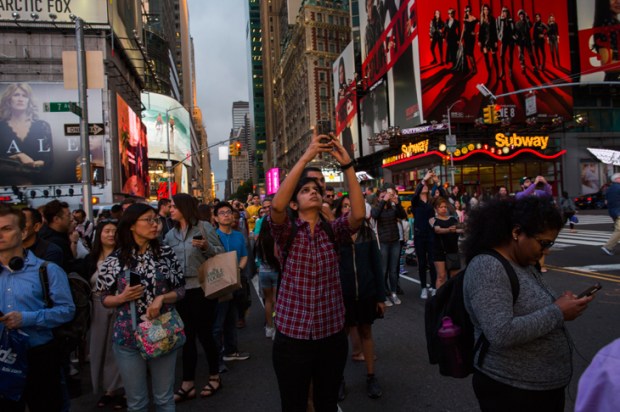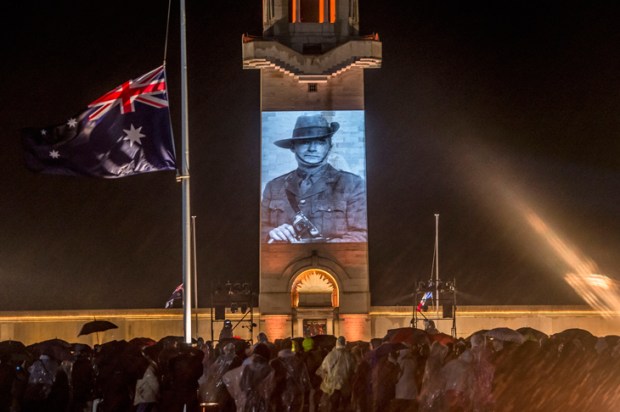It is not often that I feel sorry for a politician however Bill Leak’s portrait of Bill Shorten as a gormless ventriloquist dummy, on the knee of a CFMEU goon, did the trick. Leak then followed this up with something even more savage – Bill as a dog with a shrinking tail but still enough to be wagged by the CFMEU. This is lethal pen work. We have in this country a grand tradition of political cartoonists. They follow the great Englishmen; George Cruikshank and James Gillray and during the war Sir David Lowe. Here the work of Hop (Livingston Hopkins), Norman Lindsay, Alan Moir, Larry Pickering, Bruce Petty and ‘Bleak’ to name a few. I have noticed that quite a lot of figurative painters are natural cartoonists. John Olsen is a dab hand on a table cloth, Brett Whitely, Gary Shead, Martin Sharpe could all put a razor through a topic with a pen (Indian ink on a steel nib). All these fellows are fine artists as is Bill Leak. He probably should have won an Archibald. Well, the fates chose differently and ain’t we lucky to have him lurking watching and drawing – to excoriate and humiliate what passes for political life in Australia.
Down to Melbourne for the Cup, guests of Rob and Gai Waterhouse. Amidst the grand hospitality I came to understand that these polite well mannered people who become immersed in the odds have in their heads very large abacuses; they crunch figures like I mix paint. They feel and see maths, to them it is tangible – the art of course is to be able to understand what the logic means. With the atmosphere of horse racing at Flemington you may not win any money but really nobody loses as it is such an occasion. Gai Waterhouse is a legend in the racing fraternity and renowned for her charm, hospitality and may I suggest strength. Anyone who habitually rises at 4am to start track work understands hard work, that is a given. The art is understanding which of the beautiful equine creatures charging past her in the pre dawn light may go on to win. It is all in the ‘touch’ as they say.
Time is a ruthless screen but would it not have been wonderful if Emily Davison (the suffragette who fatally stepped in front of King George V’s horse at Epsom in 1913) could have been at Flemington to watch Michelle Payne fly over the line. Watching the beaming face of Michelle’s brother, Stephen Payne, her strapper who spoke simply and clearly about how wonderful it was – you could only feel a sense of joy. She won, he won, we won. The last time I was at Flemington I was a guest of the Victorian Racing Club because I had just won the Archibald Prize 2012. It was spectacular. My wife Janet looked very elegant and I just escaped looking like an undertaker in my rented morning suit. In fact I really thought I was doing OK. You know kind of suave, smooth, in the Chairman’s Lounge – and then HRH arrives. I realised instantly that I was defenseless against Turnbull and Asser and a Windsor. Prince Charles glided through the room – urbane, charming and, well, royal. Up to this point my wife who had been her charming and rather disgustingly flirtacious self started to change. The Royal personage navigated towards her and they engaged in a brief interlude of conversation. In fact my wife went in to some kind of hideous carnal eye lock with the Prince. I would have to say I have never seen her look at me like that.
Back in the studio (or imagination’s chamber as some neoromantic put it) again faced with the grim task of starting work in the morning. Like most people I pull on my trousers and begin. In A Moveable Feast Hemingway points out the writer’s trick of beginning the next days work before you lay down tools. (Start the next page before you go to bed). Of course there are owls and fowls; some creative people work in the morning and others in the afternoon. Some even late and in to the morning. Picasso was an owl. He rose late and worked in to the night as did Winston Churchill and Balzac. Churchill was a very competent painter and understood that visual enquiry can be therapeutic. I inherited his small book; Painting as a Pastime from my mother. It is rather instructive and his descriptions of colours make you remember how the act of trying to paint nature can give one such pleasure. It is worth remembering that Churchill was friends with Sir Alfred Munnings (notorious for referring to Picasso and Matisse as those ‘gaudy French daubers’) and Walter Sickert, a painter of great gifts concerning the theatre, romantic light and of course one of the first artists to take his subjects directly from newspaper photographs. Hitler by comparison was close to Albert Speer the architect and Arno Breker the sculptor both of whom he took with him to Paris in 1940 to view the conquered city. Arno Breker’s early work is of great sensitivity and technical beauty but unfortunately his work became leeringly vulgar as fascist dogma overtook him. Neither Churchill nor Hitler had any formal training as artists but one can only imagine the beauty of the gardens and rooms that surrounded Churchill all his life. Hitler’s visual existence had more to do with monochrome streets, raucous beer halls and poverty yet his aesthetic creation was the design of the Third Reich, the look of the uniforms and all its ephemera. Paintings of gardens against a field of rubble – in some ways they were both artists. There are problems with having a lot of books lying around the studio.
The recent events in France make these jottings appear trivial and by comparison they are. However life goes on even under the most unfortunate conditions, but I wonder what our trusted political class would do if a razor wire border was erected around greater Lakemba by Muslim Australians. Less or more unimaginable things are happening in Germany. ‘Gott Mit Uns’ is endanger of ‘Gott ist mit dem Kalifat’ – if things keep going the way they are ‘Gott Strafe Europe’ will become a reality.
Got something to add? Join the discussion and comment below.
Get 10 issues for just $10
Subscribe to The Spectator Australia today for the next 10 magazine issues, plus full online access, for just $10.
You might disagree with half of it, but you’ll enjoy reading all of it. Try your first month for free, then just $2 a week for the remainder of your first year.














Comments
Don't miss out
Join the conversation with other Spectator Australia readers. Subscribe to leave a comment.
SUBSCRIBEAlready a subscriber? Log in